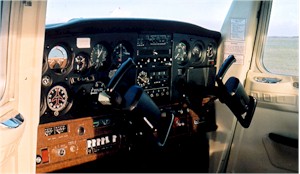
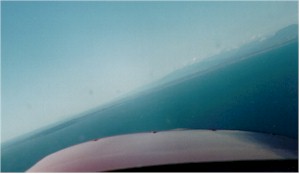
In the last lesson we learned how we can cruise, climb, and descend using attitude, power, and trim to achieve a desired performance. When navigating in the air we need to turn from time to time and so in this lesson we’ll learn about turning.


To turn we simply rotate the control column in the direction in which we want to turn and the aeroplane will bank in that direction, but how does this make the aeroplane turn?
To explain this I need to introduce you to Vectors.
…are arrowed lines that represent direction, and quantity. They can express direction and speed, or direction and amount of force. Now lets look at vectors as they apply to the aeroplane by learning some more definitions.

Thrust.
Pressing down on the accelerator (gas) pedal of your car will increase its speed, or allow you to maintain speed on a hill. The wheels of the car connected to the engine Thrust it forward.
On the front of our aeroplane there is a propeller that spins around, drawing the air through it, and moving it backwards to Thrust the aeroplane forward. In high School you probably learned Newtons Laws in Physics class, for every action there’s an equal and opposite reaction, moving air backwards moves the aeroplane forwards!
Drag.
If you take your foot off the accelerator (gas) on a level highway, the car will slow down. This is because the air is resistant to the movement of the car. This force we call Drag, it is always equal and opposite to the thrust. Without drag, your car would never slow down!
Lift.
Lift is the upwards force generated to the most extent by the wings, although in a steep climb some of this force is generated by the Thrust! Lift is always equal and opposite to Weight. Lift (force) = mass (air) x acceleration (f = ma).
Weight.
Weight is Mass times Gravity! The formula is W = mg (another version of: f = ma). A spacecraft orbiting the Earth is weightless, we’ve all seen the astronauts floating around up there. The astronaut is weightless, but obviously he or she still has mass! On the surface of the Earth we can get a measure of this mass because the force of gravity is pulling down on it! Gravity is an acceleration force, if you fall out of an aeroplane you pick up speed like a brick, increasing your drag by using a parachute does help to reduce the chance of injury in such an event! Weight (force) = mass (of aircraft) x gravity (acceleration) (f = ma).
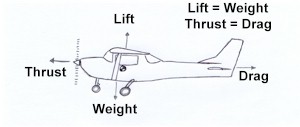
In level flight, the lift generated by the wings is directly opposite to the force of gravity, but when we bank this lift is now at an angle to it and this gives us a turning force. This situation is easily depicted using a vector diagram to split the lift into its component parts: the part that opposes gravity, and the part that causes the aeroplane to turn.
The amount of lift that is opposing gravity has now been reduced and so we need to increase the angle of attack to generate more lift by raising the nose slightly.
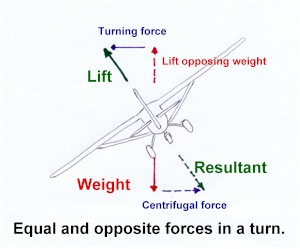
In a banked attitude the aeroplane is moving in both Pitch and Yaw. If the aeroplane was to turn with the wings level, this turn would be entirely yaw, it is possible to do this but it is very uncomfortable! If we rolled the wings to 90° to the horizon, it will turn but there will be no lift acting upwards and so we would descend, quickly!
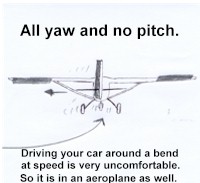
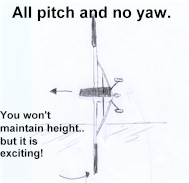
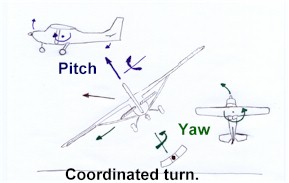
So we compromise and bank the aeroplane in between wings level and wings vertical. We control the yaw by keeping the ball in the middle and the aeroplane turns easily with your passengers’ stomachs in harmony!
In a 45 degree banked turn the aeroplane's Pitch movement = its Yaw movement
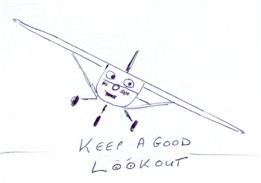
But what about the rudder?
In the next lesson we will learn how to use the rudder to control yaw.
© Michael Peare 2015